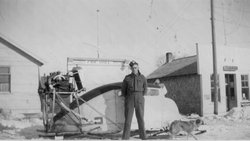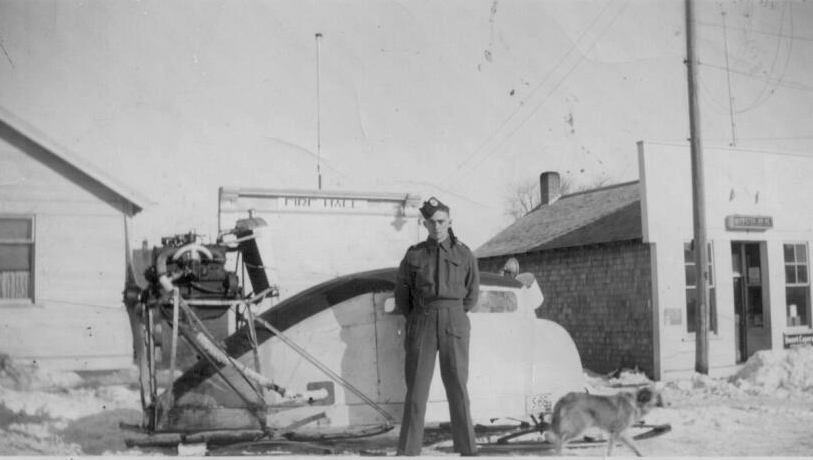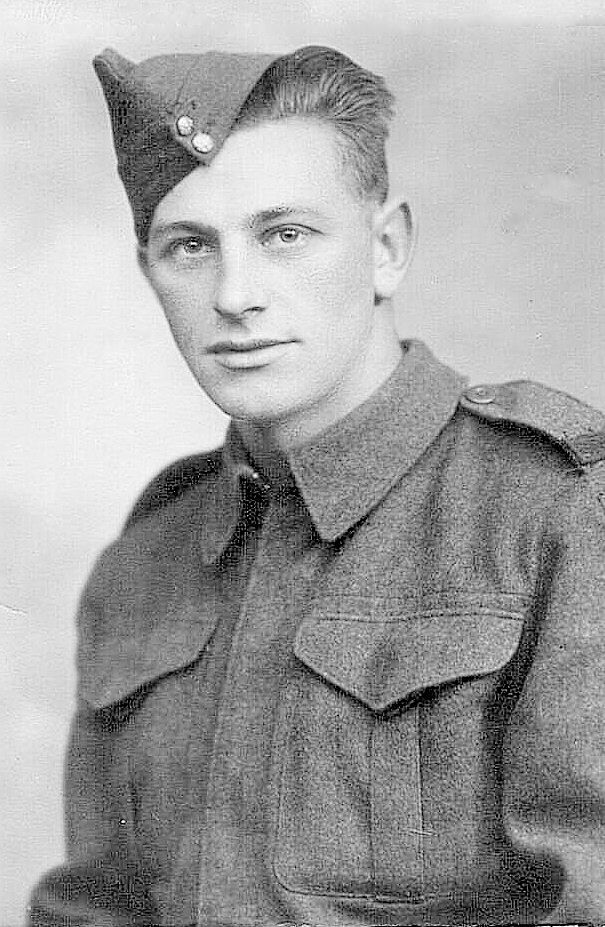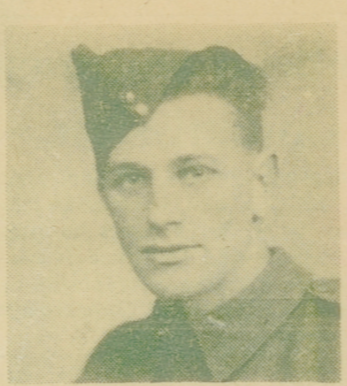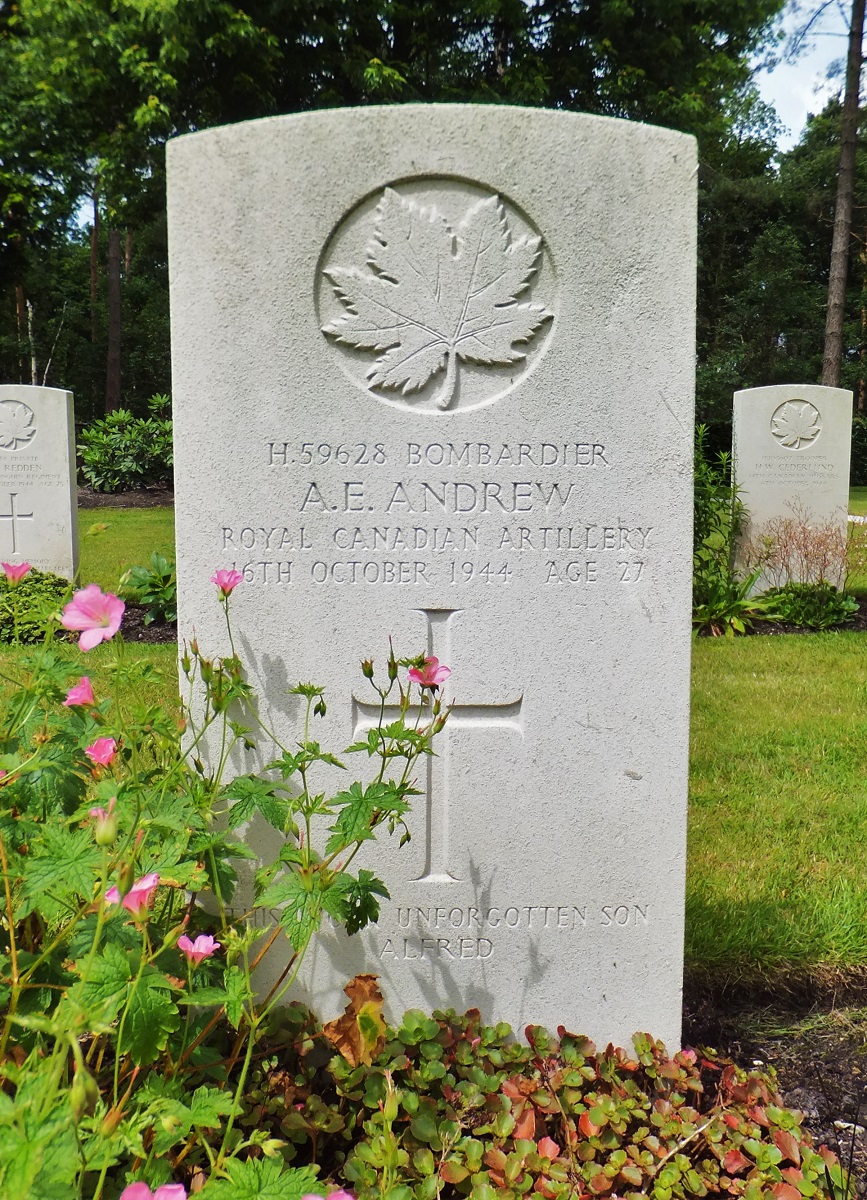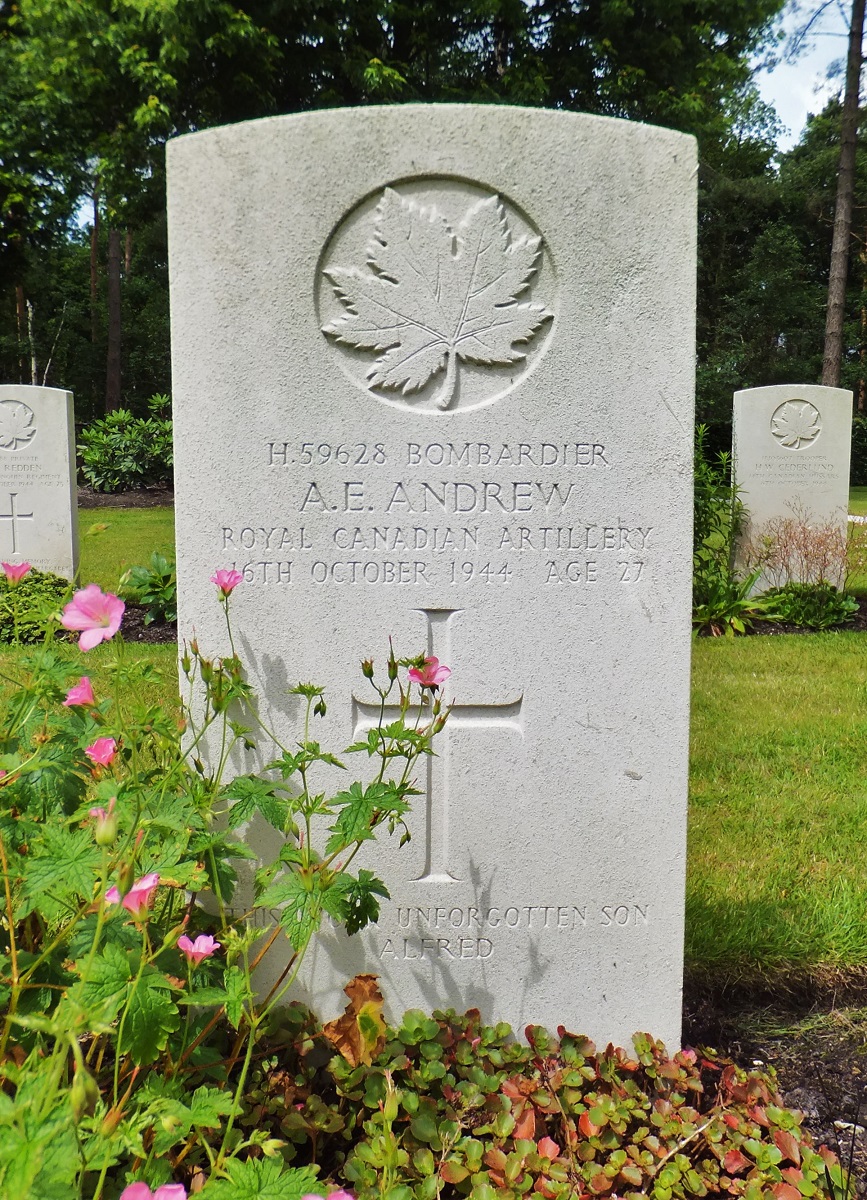BOMBARDIER ALFRED EDWIN ANDREW
Number H59628
Royal Canadian Artillery Sixth Canadian Field Regiment
Enlisted January 1941
Alf’s grave is located at the Bergen-op-Zoom Canadian War Cemetery located north of the Scheldt River near the Belgian border. This cemetery contains 968 Canadian graves, including 64 from the RCAF.
Most of the soldiers buried here lost their lives in the fighting north of Antwerp during the Battle of the Scheldt, as the 2nd Canadian Infantry Division, with support from the 4th Canadian Armoured division, worked to clear the right (north) bank of the Scheldt estuary of German forces.
By 1944 Germany had control of most of Europe and had control of the Scheldt Estuary. The Germans were located on high ground on the north bank of the estuary.
The Port of Antwerp, which came under British control on September 04, 1942 was useless until the Scheldt Estuary was cleared.
The Battle of the Scheldt was a series of military battles consisting of four operations. The first one began on October 02, 1944 with its advance north from Antwerp. The second was Operation Switchback, which began on October 06, 1944. The third was Operation Vitality which began on October 24, 1944. The final one was Operation Infatuate: The Capture of Walcheren Island which began on October 31, 1944. This battle lasted 37 days and fighting conditions were severe. The 2nd Canadian Infantry Division (6th Canadian Field Regiment was a supporting arm) lost 3,650 men in 33 days of fighting.
The port was finally cleared by November 08, 1944, but the First Canadian Army (which consisted of approximately 9 divisions) lost a total of 6,367 men out of the total 12,734 Allied deaths. There were 41,043 captured. One half of the Canadian casualties came from the 2nd Canadian Infantry and the 6th Canadian Field Regiment. Alf was in this group and didn’t stand a chance.
This was a grueling and costly battle and historians have largely ignored it.
It was in one of the first two operations that Alf died.
Lieutenant-General Guy Simonds (temporary command) knew that any gains in the Scheldt would come at a heavy cost. The commanders of the British army (who the Canadians were controlled by) used the Canadian troops in the most dangerous terrain. The Canadians were the first allied troops facing this formidable foe. Like leading Lambs to slaughter.
The Canadians attacked over open, lowland, flooded, booby trapped and land mined terrain in driving rain. The Germans had their A/TK guns on the banks across this lowland marshy bog.
The marshy dyke land west of Woensdrecht was difficult boggy land and therefore was not good tank country. So the medium artillery went in first, with the tanks flanking the rear.
As soon as the A/TK guns were spotted by Canadian troops, the medium artillery was called upon to knock them out. Then the tanks moved in.
October 13, known “Black Friday” saw the Canadian 5th Infantry’s Black Watch virtually wiped out. It was 3 days after this that Alf was killed when the gun (similar to the one on the front page) he was operating, over heated and exploded, killing him and two crew members instantly. The other three crew members were sitting ducks and the Germans dropped a bomb on them, killing them shortly thereafter.
Heavy fighting at Hoogerheide also ensued but by October 16 Woensdrecht was secured. The Canadians achieved their first objective, but suffered heavy casualties. Bergen-op-Zoom was free.
What is a Bombardier? It is a non commissioned artillery officer in the Canadian Army who releases the bombs. In the US Forces this rank is reserved only for the Air force counterpart. The person who pulls the trigger. And that is what Alf did.
He pulled the trigger.
And this is the essence of what Alf and 3,650 of his compatriots lost their lives for.
First, I would like to thank my Dad, Harold Andrew for talking so much. After the war, he spoke constantly of Alf and how he died. Thank goodness a lot of it stuck in my head.
Second, thank you to Auntie Vick for saying these three words, “Bergen-op-Zoom. By typing these words onto the computer, it opened up a whole world of information on the internet.
Canadian Armed Forces deaths for World War 2 vary from source to source, but I will use the figure of 42,042 Canadian deaths.
The death toll for the Canadian Army at the Battle of the Scheldt for these disastrous 37 days of fighting was slightly over 15 % of the total deaths for the entire six years of the war.
I guess historians are ignoring this battle.
There is a controversial book out written by Peter Beale called “The Great Mistake, the Battle for Antwerp and The Beveland, Peninsula September 1944”.
UBIQUE, QUO FAS ET GLORIA DUCUNT
(everywhere whither right and glory lead)
16 October 1944
Angela Andrew
September 2008
BOMBARDIER ALFRED EDWIN ANDREW
Number H59628
Royal Canadian Artillery Sixth Canadian Field Regiment
Enlisted January 1941
Alf’s grave is located at the Bergen-op-Zoom Canadian War Cemetery located north of the Scheldt River near the Belgian border. This cemetery contains 968 Canadian graves, including 64 from the RCAF.
Most of the soldiers buried here lost their lives in the fighting north of Antwerp during the Battle of the Scheldt, as the 2nd Canadian Infantry Division, with support from the 4th Canadian Armoured division, worked to clear the right (north) bank of the Scheldt estuary of German forces.
By 1944 Germany had control of most of Europe and had control of the Scheldt Estuary. The Germans were located on high ground on the north bank of the estuary.
The Port of Antwerp, which came under British control on September 04, 1942 was useless until the Scheldt Estuary was cleared.
The Battle of the Scheldt was a series of military battles consisting of four operations. The first one began on October 02, 1944 with its advance north from Antwerp. The second was Operation Switchback, which began on October 06, 1944. The third was Operation Vitality which began on October 24, 1944. The final one was Operation Infatuate: The Capture of Walcheren Island which began on October 31, 1944. This battle lasted 37 days and fighting conditions were severe. The 2nd Canadian Infantry Division (6th Canadian Field Regiment was a supporting arm) lost 3,650 men in 33 days of fighting.
The port was finally cleared by November 08, 1944, but the First Canadian Army (which consisted of approximately 9 divisions) lost a total of 6,367 men out of the total 12,734 Allied deaths. There were 41,043 captured. One half of the Canadian casualties came from the 2nd Canadian Infantry and the 6th Canadian Field Regiment. Alf was in this group and didn’t stand a chance.
This was a grueling and costly battle and historians have largely ignored it.
It was in one of the first two operations that Alf died.
Lieutenant-General Guy Simonds (temporary command) knew that any gains in the Scheldt would come at a heavy cost. The commanders of the British army (who the Canadians were controlled by) used the Canadian troops in the most dangerous terrain. The Canadians were the first allied troops facing this formidable foe. Like leading Lambs to slaughter.
The Canadians attacked over open, lowland, flooded, booby trapped and land mined terrain in driving rain. The Germans had their A/TK guns on the banks across this lowland marshy bog.
The marshy dyke land west of Woensdrecht was difficult boggy land and therefore was not good tank country. So the medium artillery went in first, with the tanks flanking the rear.
As soon as the A/TK guns were spotted by Canadian troops, the medium artillery was called upon to knock them out. Then the tanks moved in.
October 13, known “Black Friday” saw the Canadian 5th Infantry’s Black Watch virtually wiped out. It was 3 days after this that Alf was killed when the gun (similar to the one on the front page) he was operating, over heated and exploded, killing him and two crew members instantly. The other three crew members were sitting ducks and the Germans dropped a bomb on them, killing them shortly thereafter.
Heavy fighting at Hoogerheide also ensued but by October 16 Woensdrecht was secured. The Canadians achieved their first objective, but suffered heavy casualties. Bergen-op-Zoom was free.
What is a Bombardier? It is a non commissioned artillery officer in the Canadian Army who releases the bombs. In the US Forces this rank is reserved only for the Air force counterpart. The person who pulls the trigger. And that is what Alf did.
He pulled the trigger.
And this is the essence of what Alf and 3,650 of his compatriots lost their lives for.
First, I would like to thank my Dad, Harold Andrew for talking so much. After the war, he spoke constantly of Alf and how he died. Thank goodness a lot of it stuck in my head.
Second, thank you to Auntie Vick for saying these three words, “Bergen-op-Zoom. By typing these words onto the computer, it opened up a whole world of information on the internet.
Canadian Armed Forces deaths for World War 2 vary from source to source, but I will use the figure of 42,042 Canadian deaths.
The death toll for the Canadian Army at the Battle of the Scheldt for these disastrous 37 days of fighting was slightly over 15 % of the total deaths for the entire six years of the war.
I guess historians are ignoring this battle.
There is a controversial book out written by Peter Beale called “The Great Mistake, the Battle for Antwerp and The Beveland, Peninsula September 1944”.
UBIQUE, QUO FAS ET GLORIA DUCUNT
(everywhere whither right and glory lead)
16 October 1944
Angela Andrew
September 2008
Family Members
Sponsored by Ancestry
Advertisement
Explore more
Sponsored by Ancestry
Advertisement
